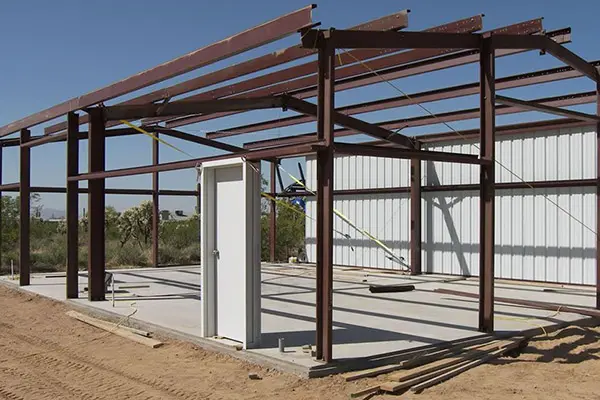When it comes to constructing buildings, especially steel structures, there is a common misconception surrounding the necessity of foundations. Many people wonder if steel buildings require foundations or if they can simply stand on their own. In this article, we will delve into the subject and debunk the myth surrounding the need for foundations in steel buildings. We will explore the importance of foundations, their role in supporting steel structures, and the various types of foundations commonly used.
The Importance of Foundations for Steel Buildings
Foundations play a crucial role in supporting any type of building, including steel structures. They provide a solid base upon which the entire building rests, distributing the weight of the structure evenly to the ground. Without a proper foundation, a steel building may be susceptible to settlement, shifting, and structural damage over time.
Ensuring Stability and Structural Integrity
A foundation ensures the stability and structural integrity of a steel building. It helps counteract the forces exerted on the structure, such as wind, seismic activity, and the weight of the building itself. By transferring these forces to the ground, the foundation prevents excessive movement and ensures that the steel building remains sturdy and safe.
Types of Foundations for Steel Buildings
There are several types of foundations commonly used for steel buildings, each offering unique advantages depending on the specific requirements of the project. Let’s explore a few of them:
Concrete Slab Foundation
A concrete slab foundation is a popular choice for smaller steel buildings or structures with minimal load-bearing requirements. This type of foundation consists of a solid slab of concrete poured directly onto the ground. The slab acts as both the foundation and the floor of the building, providing a level surface for the steel structure to rest upon. Concrete slabs are cost-effective, easy to construct, and suitable for buildings with light to moderate loads.
Trench Foundation
A trench foundation is commonly used for larger steel buildings or structures that require additional support. It involves excavating trenches along the perimeter of the building and filling them with reinforced concrete. The reinforced concrete beams in the trenches serve as the foundation walls, providing stability and distributing the weight of the building evenly. Trench foundations are ideal for buildings with heavier loads or in areas with poor soil conditions.
Pier Foundation
Pier foundations consist of vertical columns or piers that are strategically placed to support the steel structure. These piers are typically made of reinforced concrete or steel and are driven deep into the ground until they reach stable soil or bedrock. Pier foundations are suitable for steel buildings constructed on uneven or sloping terrain. They provide excellent load-bearing capacity and can accommodate structures with varying heights and weight distributions.
FAQs
Q: Can a steel building be constructed without a foundation?
A: No, it is not advisable to construct a steel building without a foundation. Without a proper foundation, the structural integrity of the building can be compromised, leading to safety concerns and potential damage over time.
Q: How long does it take to construct a foundation for a steel building?
A: The time required to construct a foundation for a steel building depends on various factors, including the size of the building, the complexity of the foundation design, and the site conditions. It can range from a few days to several weeks.
Q: Can an existing foundation be used for a new steel building?
A: In some cases, an existing foundation may be suitable for a new steel building. However, it is essential to assess the condition and load-bearing capacity of the foundation to ensure it meets the requirements of the new structure. Consulting with a structural engineer is recommended to determine if any modifications or reinforcements are necessary.
Conclusion
Contrary to the myth, steel buildings do require foundations to ensure stability, structural integrity, and long-term durability. Foundations play a vital role in evenly distributing the weight of the building and counteracting external forces. Depending on the size, load requirements, and site conditions, various types of foundations, such as concrete slab, trench, or pier foundations, can be used to support steel structures. By understanding the importance of foundations in steel building construction, we can ensure the safety, longevity, and performance of these versatile structures.
Post time: Jan-25-2024




